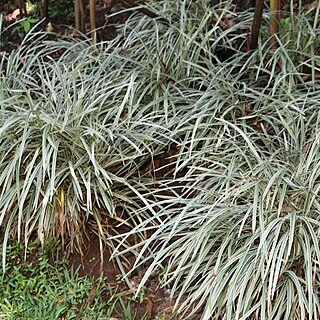Roots sometimes with fleshy, tuberous part near tip. Rhizome short, thick. Leaves basal, tufted, sessile, grasslike, 15--55(--70) cm × 3--15 mm, 5--9-veined, base attenuate, margin usually serrulate; leaf tufts usually surrounded by brownish, membranous sheaths. Scape (15--)20--50 cm, sometimes slightly flattened and narrowly 2-winged. Inflorescence a reduced panicle, (2.5--)5--16 cm, many flowered; bracts subulate, linear, or lanceolate, basal one 1.5--4 cm. Flowers in clusters of 2 or 3 or sometimes solitary; pedicel 4--7 mm, articulate proximally or at middle. Tepals white or purplish, oblong, ovate, or ovate-lanceolate, 4--7 × 2--2.5 mm. Filaments very short; anthers 2--4 mm. Style 3--4 mm. Seeds ellipsoid. Fl. May--Aug, fr. Aug--Oct. 2 n = 36*, 54, 68, 72*, 108*, 112.
More
A herb. The roots can be fleshy. There is a short thick rhizome. The leaves are at the base and in tufts. They do not have leaf stalks and are like grass leaves. They are 15-55 cm long by 2-15 mm wide. There are teeth along the edge. The flower stalk is 20-50 cm tall and there are many flowers in a small panicle. The flowers are in clusters or 2 or 3 and they are white or purplish.

